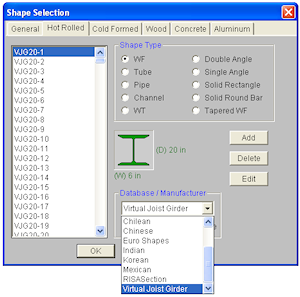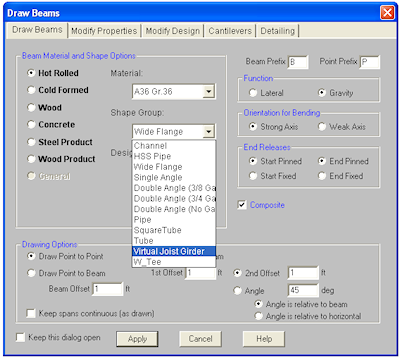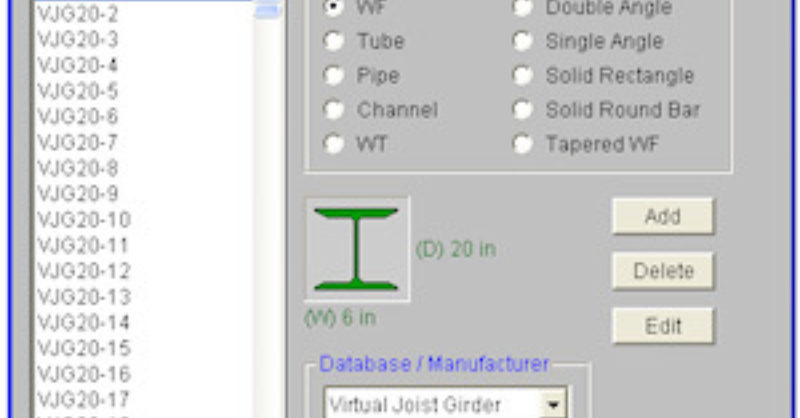Products
Learn
Support
Company
The Steel Joist Institute (SJI) has recently put together a Virtual Joist Girder table which converts common joist sizes into equivalent wide flange beams. This topic describes how to use these Virtual Joist Girders within the RISAFloor program.
The engineer should use these Virtual Joist Girders in their analysis model whenever their joist girders are part of a lateral frame. They should not be used for simply supported joist girders which only resist gravity loads.
Virtual Joist Girders are included in version 7.0 of RISAFloor released December 2012.
A Virtual Joist Girder database will be listed as one of the database options on the Hot Rolled tab of the Shape Selection dialog as shown below.

A Virtual Joist Girder option will appear as one of the Shape Group / Design List options shown in the Draw Beams Dialog below.

Note: This only appears when the Material is set to Hot Rolled Steel.
Depth Restrictions: The RISA optimization is done based on cross sectional area. So, if two shapes both satisfy stress or capacity checks, the program will choose whichever shape weighs less as the one which is considered to be more efficient. That shape will then be listed as the suggested shape as part of the redesign or optimization done by RISAFloor.

The only problem is that Virtual Joist Girders base their cross sectional area solely on the chord area. Therefore, a VJG20-1 is assumed to weigh exactly the same as a VJG40-1. That cannot be the case, but that is currently how the virtual joist girder tables work. As such, the optimization routines in RISA may pick deeper shapes than would truly be most efficient. For that reason, it is suggested that the engineer specify reasonable depth restrictions when using the RISA optimization routines for virtual joist girders.
Material and Density: Generally speaking the VJG should be assigned to the same material properties (A992) as a traditional wide flange. However, because the weight of the webs is not currently accounted for, SJI suggests using a density which is 15% higher than traditional steel.
Unbraced Length: Currently, SJI is suggesting using an unbraced length equal to zero for the top flange of VJG members. However, this may not be appropriate for the bottom flange of the beam for VJG members that are part of moment frames.
